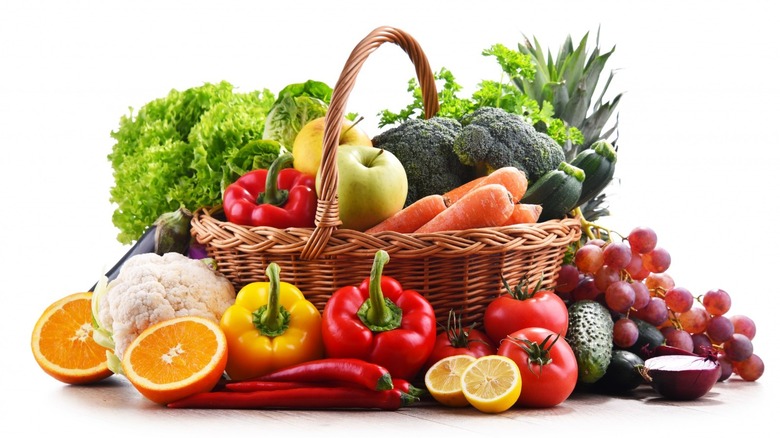What A New CDC Report Reveals About US Fruit And Vegetable Consumption
You've likely heard about the importance of eating enough fruits and vegetables throughout the day. According to the Harvard T.H. Chan School of Public Health, consuming more produce throughout the day may help lower blood pressure, decrease the risk of heart conditions, keep your blood sugar stable, and much more. These foods also come packed with essential vitamins and minerals, in addition to providing considerable amounts of fiber and other nutrients (via Orlando Health).
While most people are aware of the benefits of eating more vegetables and fruits, a recent study uncovered some surprising news: According to the CDC, only about one in 10 participating adults consumed the daily recommended amount of produce in 2019. The numbers varied across different demographics. For example, respondents who were 51 years old and above reported consuming the most produce, while only about 7% of low-income respondents met the daily vegetable value. The study also found that COVID-19 has impeded some groups' consumption of fruits and vegetables, while high prices have also kept these goods out of the hands of a significant portion of the population.
What does the CDC say needs to change?
The CDC says that adults should eat 3 cups of fruit and 6 cups of vegetables daily. Its study found that, on a median level, participating Americans ate fruit once a day and vegetables 1.6 times per day in 2019, meaning they did not reach these levels. Louisiana, Mississippi, Nevada and New Mexico ranked as the states with the lowest consumption of vegetables, while Maine and Vermont ranked as the highest. Even in Vermont, the most vegetable-consuming state in the study, only 16% of residents met the daily recommended vegetable intake.
This study concluded that "too few U.S. residents consume the recommended amounts of fruits and vegetables" — and if this is amended, the number of Americans living with chronic health conditions could be lowered. It recommends that states enact various programs, policies, and communications strategies to educate people about proper fruit and vegetable consumption, adding that more affordable and accessible produce would "help mitigate health disparities among U.S. residents" of different races, ages, and income levels.

